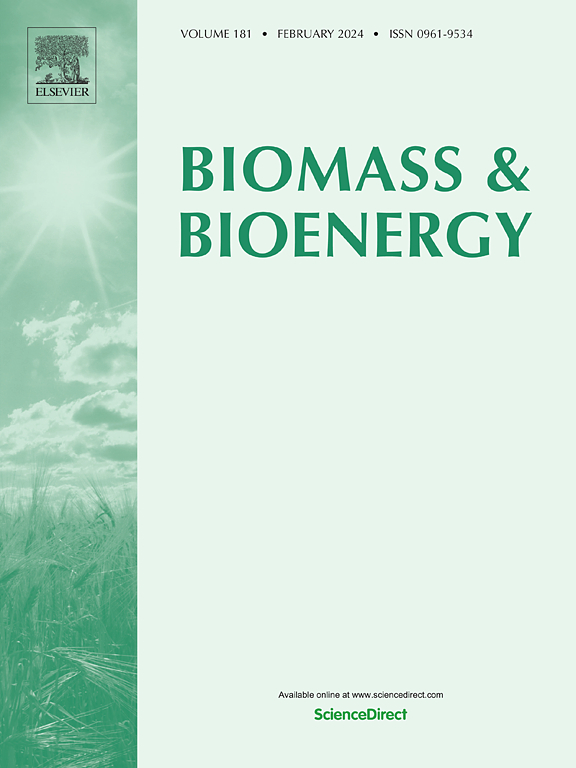Zero-waste perspective for circular bioeconomy of phycoremediation and life cycle assessment: Essentialities, development and challenges
IF 5.8
2区 生物学
Q1 AGRICULTURAL ENGINEERING
引用次数: 0
Abstract
The discharge of numerous inorganic pollutants, heavy metals, organic dyes, cleaning agents and radioactive reactants, etc., from the sewage wastewater and industries adversely affects the water ecosystem as well as biomagnifies through the food chain. Hence, these incipient bottlenecks exhibit a critical issue that will necessitate the limits on their usage, reusability, and circular economy in order to foster sustainability. In this context, the researchers are increasingly exploring innovative, feasible, economically viable, biodegradable, resilient, chemical-free and energy-efficient wastewater treatment techniques. Oxygenic photosynthetic “green microalgae” are emerging as one of the most suitable solutions in the frontiers of wastewater treatment technology and management systems. In spite of acting as a carbon sink, microalgae help in biosorption and biotransformation of environmental pollutants. The present review focuses on the integration of sewage wastewater treatment and recycling with a novel multiproduct biorefinery framework by incorporating the growth kinetics parameters. Different metabolic pathways (photoautotrophic, mixotrophic, and heterotrophic) of microalgae are also discussed that affect the entire biomass for the production of valuable products. Genetic engineering and algomics approaches are highlighted that help towards the ample valorization of microalgae biomass into several valuable metabolites. Further, the study emphasizes the Life Cycle Assessment in evaluating the entire sustainability of the proposed biorefinery, contributing to a zero waste and circular bioeconomy.
零废弃物视角下的生态修复与生命周期评估:必要性、发展与挑战
污水、废水和工业排放的大量无机污染物、重金属、有机染料、清洗剂和放射性反应物等对水生态系统产生不利影响,并通过食物链进行生物放大。因此,这些初期的瓶颈表现出一个关键问题,这将需要限制它们的使用、可重用性和循环经济,以促进可持续性。在此背景下,研究人员越来越多地探索创新的、可行的、经济可行的、可生物降解的、弹性的、无化学物质的和节能的废水处理技术。氧光合作用“绿色微藻”正在成为污水处理技术和管理系统前沿最合适的解决方案之一。微藻除了具有碳汇的作用外,还有助于环境污染物的生物吸收和生物转化。本文介绍了一种结合生长动力学参数的新型多产物生物炼制框架,将污水处理和循环利用相结合。微藻的不同代谢途径(光自养、混合营养和异养)也会影响整个生物量以生产有价值的产品。强调了基因工程和藻组学方法有助于将微藻生物量充分转化为几种有价值的代谢物。此外,该研究强调了生命周期评估,以评估拟议生物精炼厂的整体可持续性,为零浪费和循环生物经济做出贡献。
本文章由计算机程序翻译,如有差异,请以英文原文为准。
求助全文
约1分钟内获得全文
求助全文
来源期刊

Biomass & Bioenergy
工程技术-能源与燃料
CiteScore
11.50
自引率
3.30%
发文量
258
审稿时长
60 days
期刊介绍:
Biomass & Bioenergy is an international journal publishing original research papers and short communications, review articles and case studies on biological resources, chemical and biological processes, and biomass products for new renewable sources of energy and materials.
The scope of the journal extends to the environmental, management and economic aspects of biomass and bioenergy.
Key areas covered by the journal:
• Biomass: sources, energy crop production processes, genetic improvements, composition. Please note that research on these biomass subjects must be linked directly to bioenergy generation.
• Biological Residues: residues/rests from agricultural production, forestry and plantations (palm, sugar etc), processing industries, and municipal sources (MSW). Papers on the use of biomass residues through innovative processes/technological novelty and/or consideration of feedstock/system sustainability (or unsustainability) are welcomed. However waste treatment processes and pollution control or mitigation which are only tangentially related to bioenergy are not in the scope of the journal, as they are more suited to publications in the environmental arena. Papers that describe conventional waste streams (ie well described in existing literature) that do not empirically address ''new'' added value from the process are not suitable for submission to the journal.
• Bioenergy Processes: fermentations, thermochemical conversions, liquid and gaseous fuels, and petrochemical substitutes
• Bioenergy Utilization: direct combustion, gasification, electricity production, chemical processes, and by-product remediation
• Biomass and the Environment: carbon cycle, the net energy efficiency of bioenergy systems, assessment of sustainability, and biodiversity issues.
 求助内容:
求助内容: 应助结果提醒方式:
应助结果提醒方式:


